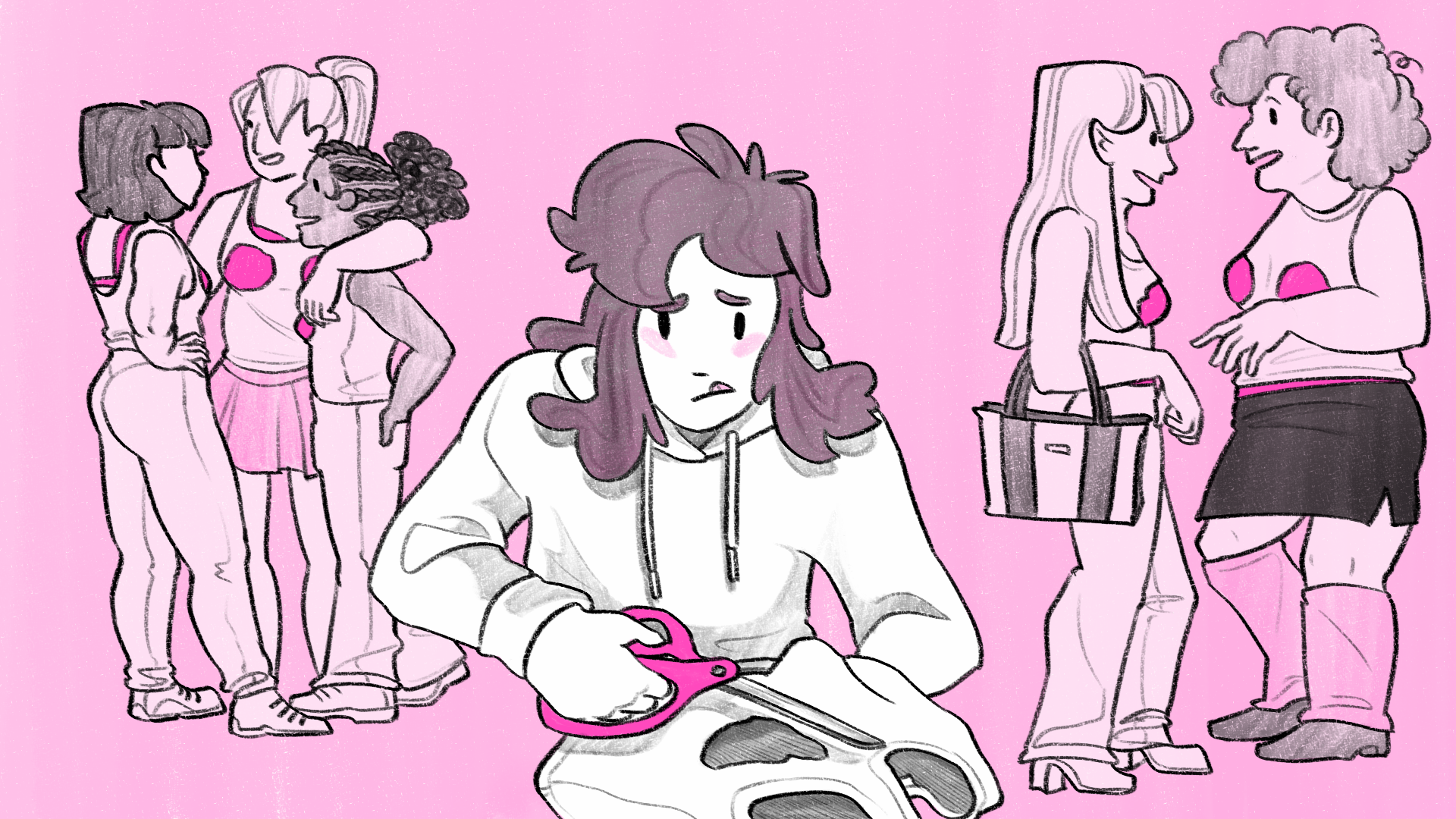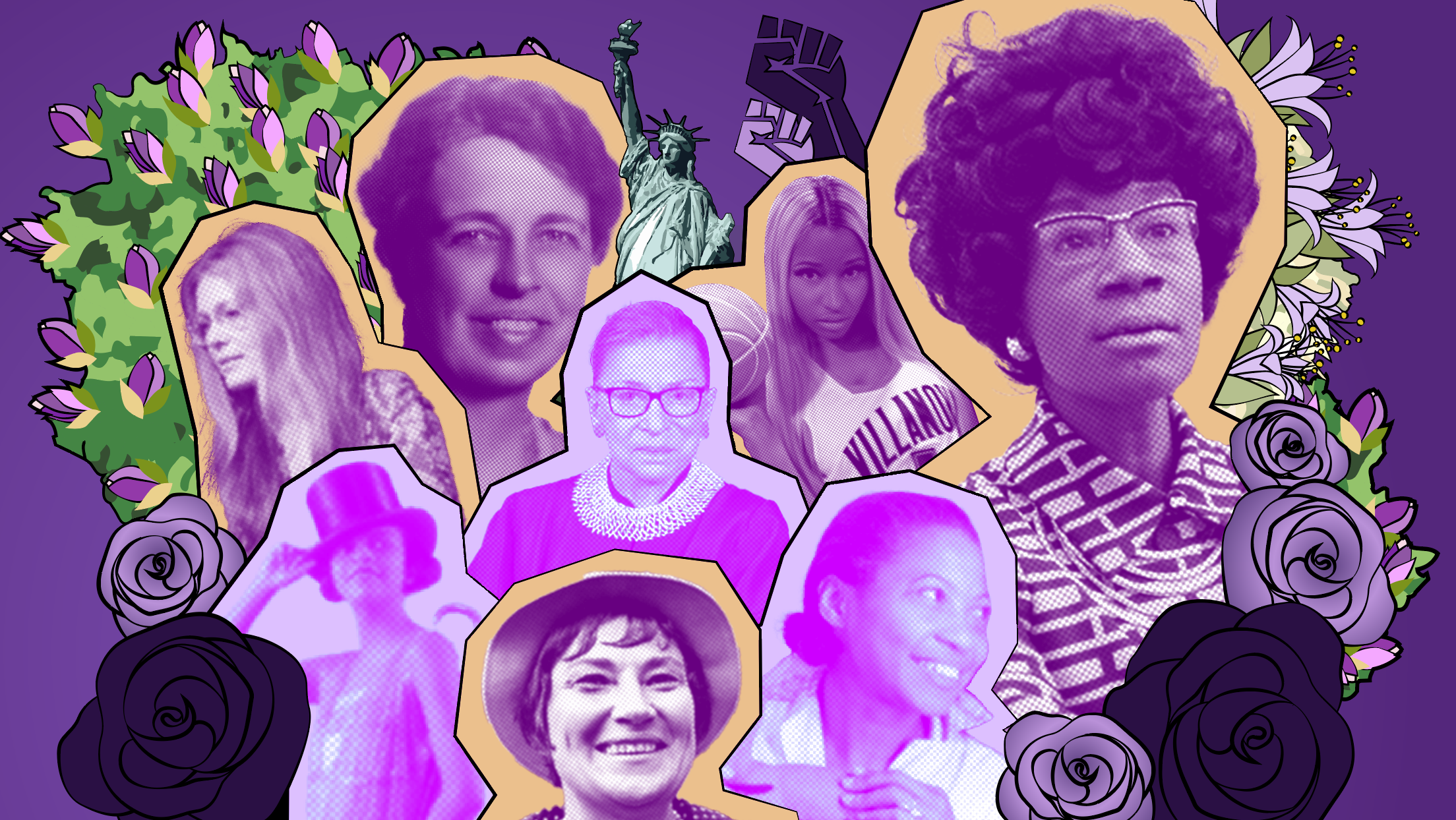Students have mixed feelings about integrating and adjusting to their new facilities
With Reporting By: Tanya Jaff
Fresh from the exhilarating sting of final project critiques, Parsons students cleaned out their lockers on December 16 and took one last glance at the 560 Seventh Ave. building, as staff and students said goodbyes to their sewing machines and carried their mannequins, pattern paper and plastic slopers out onto Seventh Avenue for the very last time. A vivid red message remained plastered in the Parsons Midtown building windows, declaring to all who passed: “YOU NEVER LEAVE PARSONS” — you just move downtown.
This marked the move of the Parsons fashion design program from the Garment District to The New School’s Greenwich Village campus. With the start of the spring semester, the some 821 BFA and 313 AAS fashion design students moved into their new home at the University Center — but the shift comes not without dissension. Many students have been thrilled with the change of venue and access to university facilities, while others yearn for the uptown location and are disappointed with the new spatial arrangements.
“It’s good and bad. I live off the one train in Brooklyn so personally, commute-wise, it’s a lot easier for me,” said Caitlin Farradas, a Fashion Design BFA student. “But being further away from the resources that were in the Garment District, I find, are kind of an issue.”
The old three-story Parsons building at 560 Seventh Ave., located in the heart of Manhattan’s Garment District, had a low-lit, depressing gray lobby facing the tourist-congested Seventh Ave. and was used by Parsons students since it was gifted to the school by Albert A. List in 1975. Students and professors would travel to Times Square daily and take the elevator up to the fourth or fifth floors. To gain access to their particular studios, students would cross through a narrow passageway into an adjacent building and take the steps up or down, lest they be packed into one of the two small elevators. “The midtown building was equal parts homey with it’s cough drop-yellow lighting, lack of ventilation, and dangerous for having housed an unknown number of lost sewing utensils, pins in particular,” said Joseph Kushibab, a junior in the BFA program.
The three buildings that comprised the midtown fashion campus have now been condensed into two floors in the University Center. Fashion Program Director Fiona Dieffenbacher told the Free Press that the move downtown is a huge advantage for students. “We were certainly quite isolated and geographically separated from the campus. I think that there’s a win-win across the board for students logistically,” said Dieffenbacher. “If they have classes here, it’s quite challenging moving back and forth.”
The old Parsons 560 building and the 500-member Garment Center Synagogue that it housed have been purchased by Soho Properties for $61.5 million, the New York Times reported. Sharif El-Gamal, CEO of Soho Properties, reportedly has plans to create a 23-story hotel and retail center. No permits have been filed with the Department of Buildings.
Construction for the University Center began in August 2010, opened just in time, despite a flood, to welcome students for the spring semester of 2014. The building is part of The New School’s plan for a centralized campus and the fashion program’s approach to a new and improved space for learning and collaboration. The 375,000 ft2 building contains 57 state-of-the-art classrooms and facilities, including the laser cutting lab, knitwear lab and 3D printing, which fashion students had scant access to before the move downtown. Dieffenbacher said that the new facilities are “all things that help fashion students do what they do better.”
The fifth and fourth floors of the University Center house the majority of the fashion studios, including sewing labs, workshop spaces and textile equipment for all New School students to use. The John L. Tishman Auditorium also features a convertible stage for special events and performances, and becomes a runway for fashion shows. Many students agree that the new building has created opportunities for them. Sabla Stays, a sophomore in the Fashion Design program, said that “access to the printing labs” is a huge positive now that students have access to the downtown campus’ printing labs with oversized plotters and photo printers.
The inclusion of the fashion program in a space that also serves The New School’s other degree programs is supposed to give fashion students a chance to collaborate with their peers more often than they were able to when the fashion program was uptown. “I never really interact with students in other programs,” said fashion student Jiwon Choi.

Fashion student Caitlin Farradas agrees and enjoys the social aspect of being able to see more people on a regular basis. “I have friends in a lot of different programs so as far as that I feel like it’s nice to have everyone here,” said Farradas.
Hyewon Shin, another fashion student, thinks the arrangement is great. “I didn’t really like uptown because we couldn’t engage with other students from other programs. I really love seeing my friends,” Shin said.
As far as spatial arrangements go, the two floors of studios in the University Center seem to be enough for some. The building was designed by Skidmore, Owings and Merrill Architect Roger Duffy with the vision of “including spaces deliberately designed to promote collaborative, interdisciplinary learning,” according to The New School’s website.
Dieffenbacher said that so far she has heard nothing but positive feedback from staff and students. “They now have spaces they can actually meet in with one another, connecting with colleagues that they would never see. There’s this sense of campus life,” she said.
Some students have mixed opinions and are not entirely pleased with the move, the space or the new travel arrangements. Sabla Stays feels that the new facilities are too small. “Our drawing class is not the size it should be. Everything is nicer, looking at it, but we still have the same problems,” Stays said. “Sewing machines aren’t working, irons aren’t working, dress forms aren’t working. Same old, same old.”
While all of the cutting tables were reupholstered, some pieces of old equipment were brought downtown, which sophomore June Jhong found strange. “I don’t get why we couldn’t get new equipment, or replace the ones that are clearly not working,” said Jhong.
Many students have complained that being further from the Garment District’s plentiful supply stores presents a hassle. “We can’t go swatching or buy whatever we need before class, so that hurts,” said BFA student Jiwon Chow. Some think the doorstep-like proximity to fabric and trim suppliers in the Garment District put Parsons students at an advantage over other schools like Fashion Institute of Technology, Pratt and Savannah College of Art and Design.
Sophomore Brenda Berez said that there is a simple solution to the fabric supply problem: “I really hope that they will utilize the empty retail space in the University Center as a fashion supply store and a bookstore where students can purchase their school books without having to go to ten different places.”
Dieffenbacher says that she has heard many students saying there should be a fabric store in the retail space. “I think it’s a great idea. We have been approached by someone that was looking for investment who was looking to create a space that was textile driven, supporting us and supporting what we needed,” said Dieffenbacher. Ultimately, The New School’s Office of Finance and Business will make the decision of what will fill the 11,000 ft2 retail space at the corner of 14th Street and Fifth Avenue.
Ayo Keys is currently earning a dual degree in Fashion Design and Journalism + Design at The New School. Born and raised in West Philadelphia she enjoys thai food, large issues of Vogue, anything rose gold and knitting. She has an obsession with art direction, well designed fonts and hopes to one day become a Creative Director.








Leave a Reply